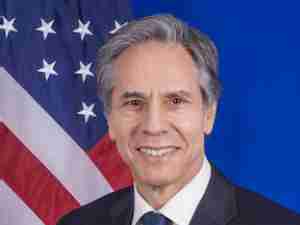Shuster Statement: Floor Consideration of WRDA
posted by AJOT | Sep 28 2016 at 08:29 AM | International Trade
House Consideration of H.R. 5303, the Water Resources Development Act (WRDA)
Floor Statement
(Remarks as Prepared)
Mr. Speaker, I rise today in support of H.R. 5303, the Water Resources Development Act of 2016.
Subcommittee Chairman Gibbs and I worked closely with Ranking Members DeFazio and Napolitano on this vital water infrastructure bill. Thanks to their hard work, the Transportation and Infrastructure Committee unanimously approved H.R. 5303 in May.
We tailored WRDA 2016 to address a specific federal responsibility: strengthening our infrastructure, through the activities of the Army Corps of Engineers, to maintain competitiveness, create jobs, and grow the economy.
This legislation follows important reforms Congress put in place in 2014 with the Water Resources Reform and Development Act. Without those reforms, we wouldn’t be here today to consider another WRDA.
The 2014 bill and today’s legislation restore regular order and the two-year cycle of Congress considering these essential bills. This has been one of my highest priorities as Chairman.
WRDA 2016 maintains Congress’ constitutional authority and oversight in ensuring we have a safe, effective infrastructure system.
Following our authorization process reforms, every Corps activity in this bill is locally driven, reviewed by the Corps according to strict, Congressionally established criteria, and presented to Congress for consideration in the form of Chief’s Reports and the Corps’ new Annual Report. Only proposals that followed this process were eligible for inclusion in this bill.
If the manager’s amendment is adopted, WRDA will authorize 31 Chief’s Reports and 29 feasibility studies; each Chief’s report was reviewed by the Committee in a public hearing.
These are critical regional priorities that provide significant national economic and environmental benefits.
For example, WRDA authorizes long-delayed upgrades of the Upper Ohio River’s Emsworth, Dashields, and Montgomery (EDM) locks and dams. The EDM facilities provide critical access to the Port of Pittsburgh, one of the Nation’s busiest inland ports. This will provide enormous benefits to the region, and make our entire Nation more competitive.
The same can be said for authorizations for the Port of Charleston, Port Everglades and the Everglades ecosystem, flood control along the Missouri River and around Sacramento, and more.
The bill also increases flexibility and removes barriers for state, local, and non-federal interests to invest in infrastructure.
Factoring in the manager’s amendment, WRDA will authorize over $9 billion to cover the federal share of these improvements to our ports, channels, locks, dams, and other infrastructure. These investments are fully offset with deauthorizations, and the bill sunsets new authorizations to help prevent future project backlogs.
WRDA has no earmarks and abides by all House rules. However, in order to comply with House rules and call up this bill today, one section of the bill as reported by the Committee was removed.
I agree with Ranking Member DeFazio that user fees paid into the Harbor Maintenance Trust Fund should be used to improve our transportation system. However, we found ourselves in a position where section 108 conflicted with House rules. We worked to find another resolution to this one issue, but were unable to do so within the rules. I appreciate the Ranking Member’s passion for this provision, and thank him for his tireless support for infrastructure investment. I want to continue working with him and others to find a solution as we work with the Senate.
However, we cannot lose sight of the larger, more important issue. Don’t let the perfect be the enemy of the good.
Only three WRDAs were enacted between 2000 and 2014. That record is unacceptable. Each delay placed America another step behind our competitors. We simply can’t afford more delays.
We must pass this jobs and infrastructure bill, and return to a regular two-year WRDA cycle to keep the Army Corps focused on these much needed investments. We cannot sacrifice these critical infrastructure improvements because of one issue.
We have a wide range of stakeholder interest in this bill, and 75 letters of support for WRDA 2016, including the National Association of Manufacturers, the U.S. Chamber of Commerce, the National Retail Federation, the National Conference of State Legislatures, and many other local and regional groups.
WRDA 2016 is good public policy. The bill advances crucial water resources infrastructure improvements, restores regular order, and gets Congress back on the two-year WRDA cycle.
I urge my colleagues to support the bill.










